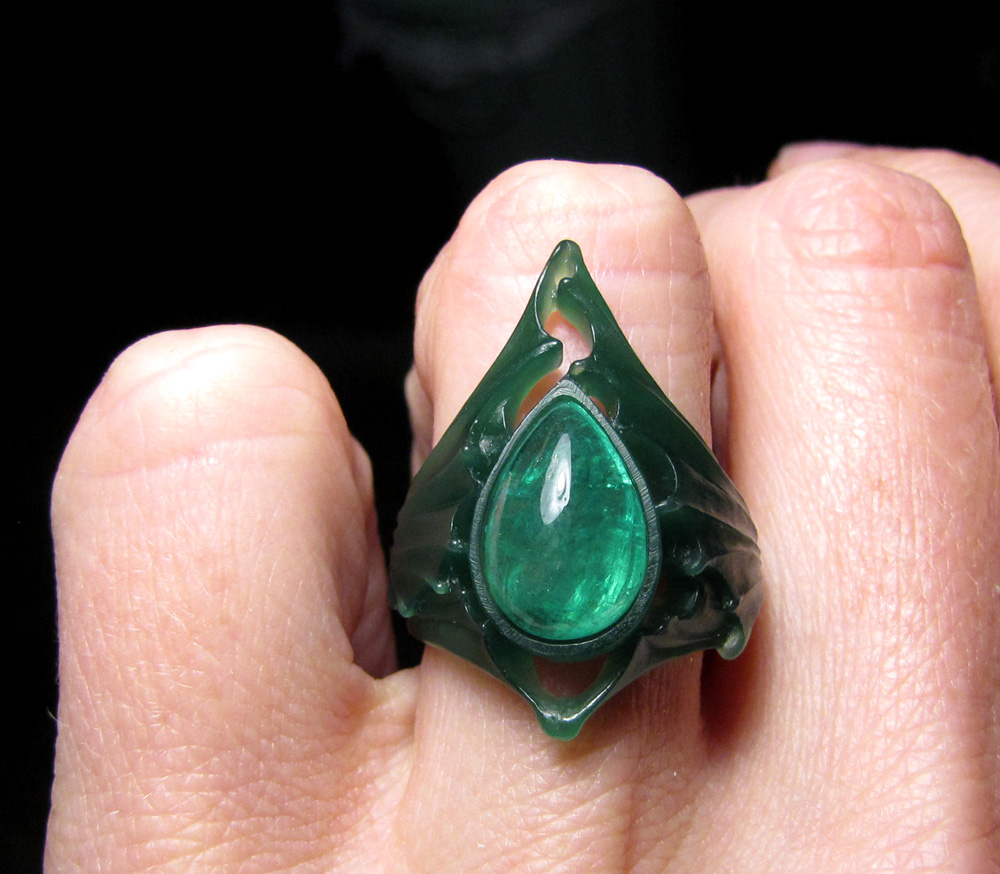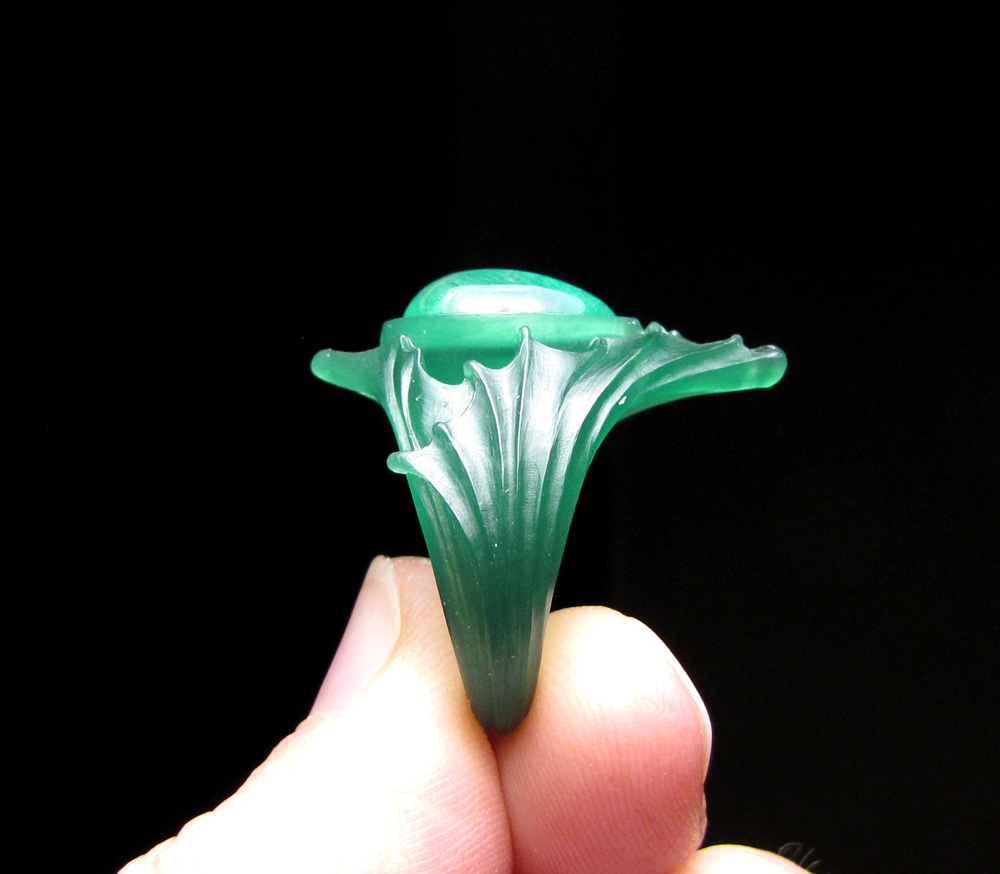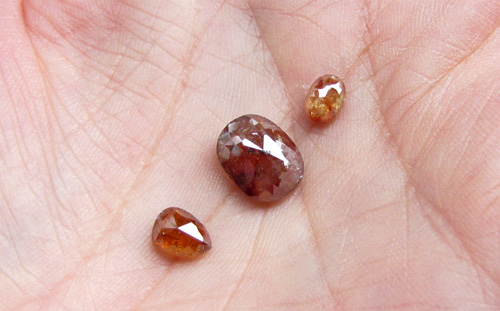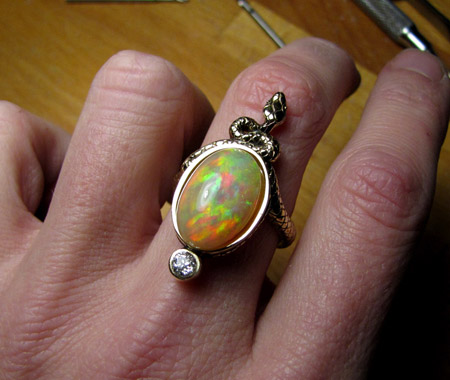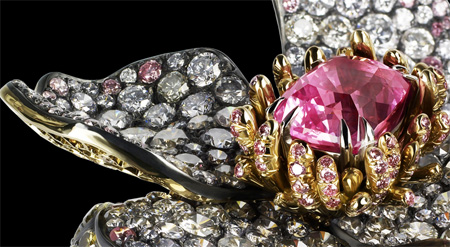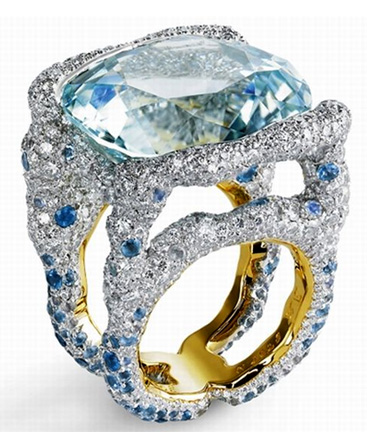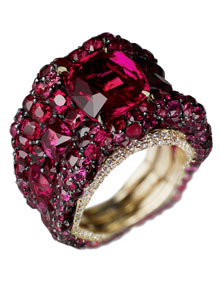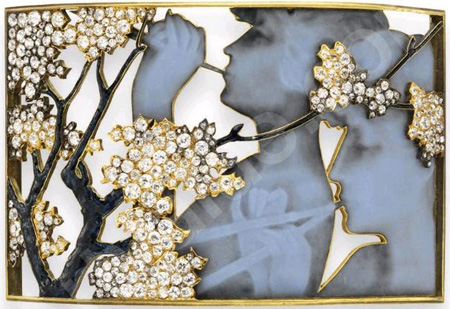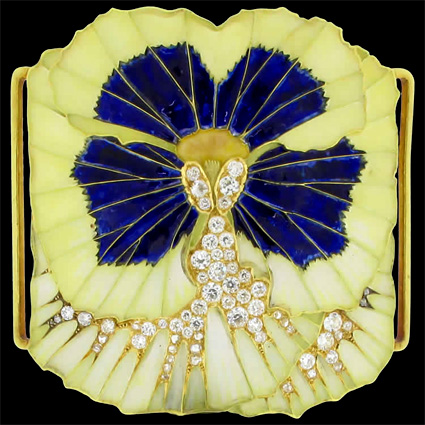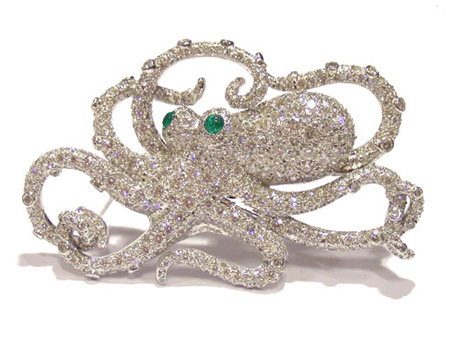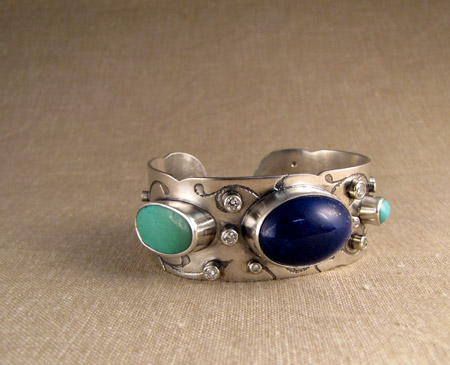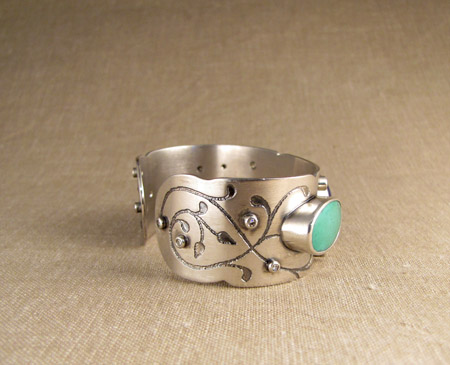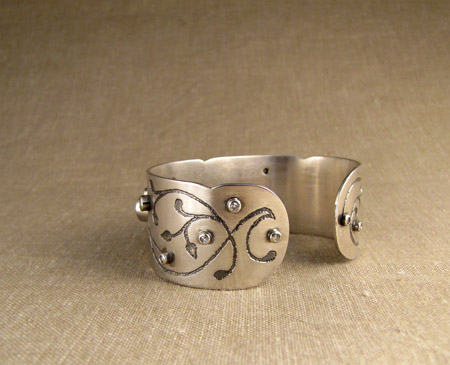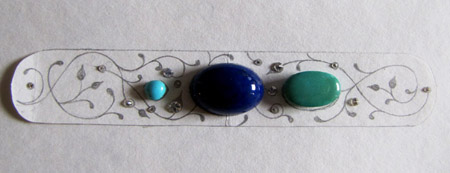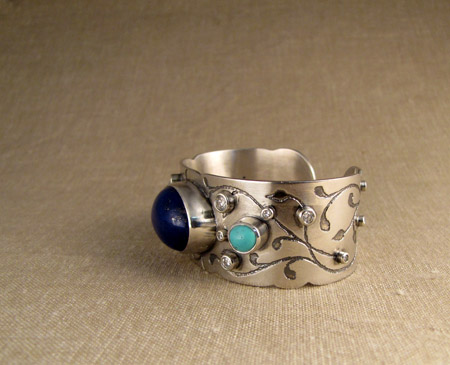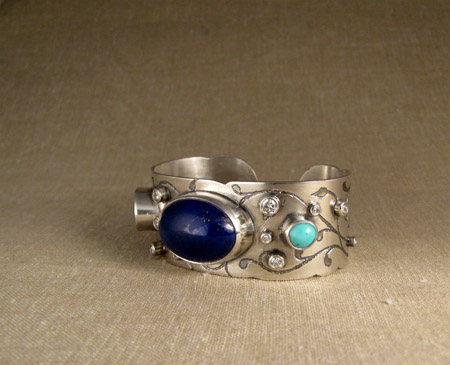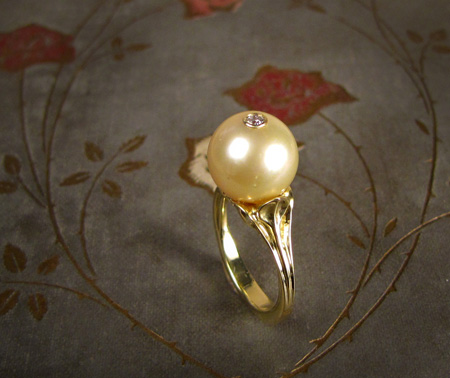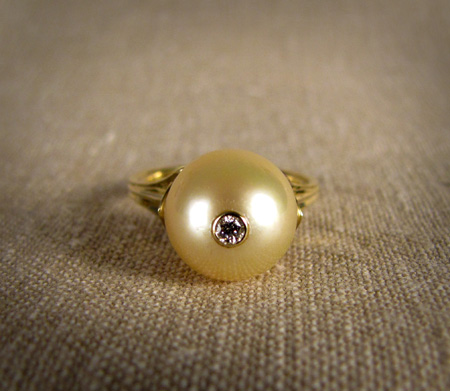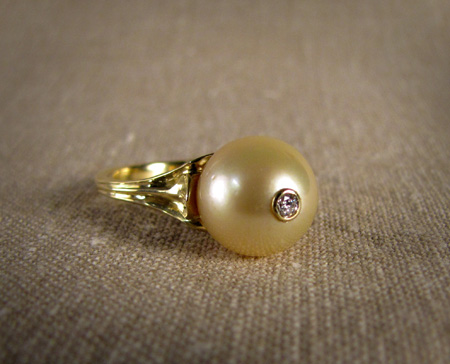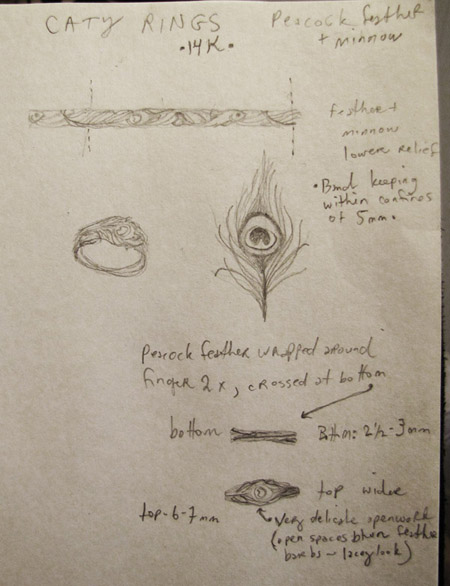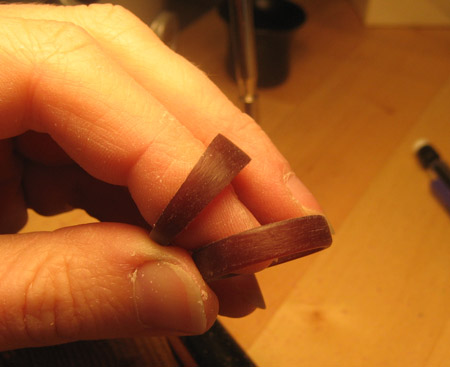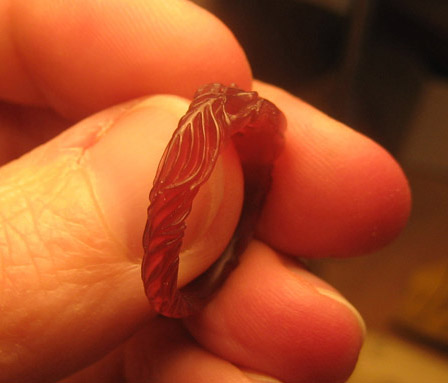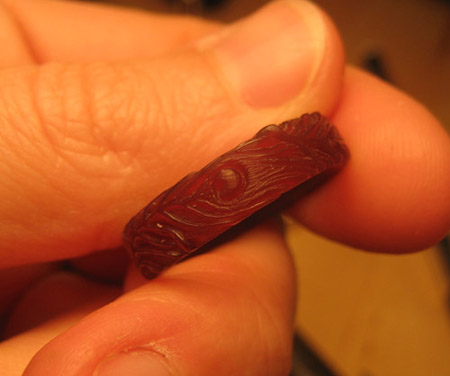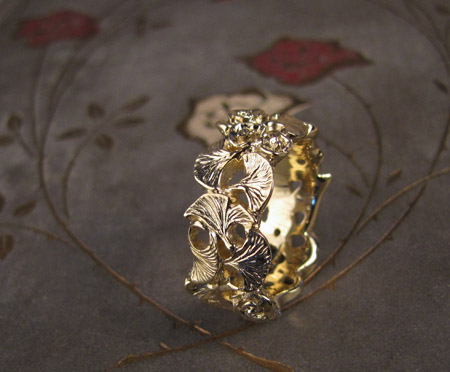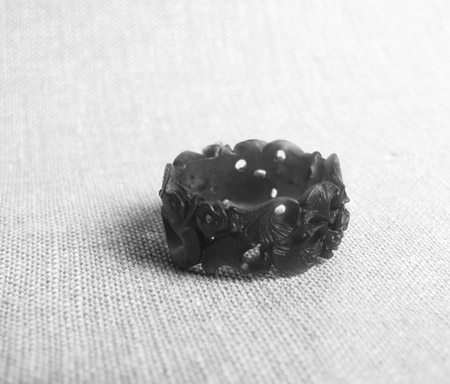I’ve been doing a major overhaul of my pricing scheme this past week or so here at Gin & Butterflies headquarters (ha! “Headquarters”—makes me sound like a secret agent or something). It’s been long in the coming but basically, about two weeks ago I idly looked up the gold market price and about died because holy shit if it wasn’t upwards of $1320/ounce*. Which is SO not cool. I have to raise my prices.
My pricing scheme thus far was based on some sort of a weight/gold content/time carving/finishing scheme that I devised like a million years ago and have been estimating and adding on to ever since. At this point, pricing had become essentially arbitrary. Every time I had to come up with a price for a new piece, I sort of eyeballed it with what I hoped was a studious expression (actually, it was mostly just squinty; never check one’s studious expression in the mirror), hefted it against one of my “known” weighted pieces, measured the width and tried to remember how many hours I had spent carving it, pulled a number out of my ass and called it done. Then I realized I forgot to add in the diamonds. Then I had to go get a calculator because I forgot how much I paid for said diamonds. This is why it’s always like 10pm by the time I manage to get something listed on Etsy and I’m needing another bourbon.
In fact, I’m ready for another bourbon now.
Then, I read this post by another Etsy blogger and decided I really needed to get my act together. Come up with a cohesive and sensical pricing formula that is fair and actually compensates me for the immense amount of time I spend creating these rings (radical idea, I know).
I brought all my pieces to the studio, weighed them (most are 18K gold), figured out the formula to get weights in 14K, worked out how much I paid for 18K and 14K alloys exactly (hint: significantly more than simply 75% and 58% gold market, respectively), worked up this incredibly vague figure that tried to encompass tool wear, polishing compounds, acids & chemicals, torch fuel, wax, sandpaper, gingersnaps, polishing and grinding compounds, packaging materials, studio rent, bandaids, etc. Then I incorporated a “Pain in the Ass” factor, which is to say that though I love each and every piece I make dearly, I have to admit that some of them are a whole lot fatter of a hassle to make than others (I’m looking at you, Art Nouveau Band). Those rings with all those little holes in the carvings? I have to thread grit-impregnated strings through all those holes and saw it back and forth to sand/polish smooth. Then I do it again with finer grit/polish. I like to think it is a meditative process.
So yeah. All that plus the fact that each piece I designed, sketched, and carved from scratch. Some of the carvings took me a really long time to do originally.
In addition to all the touchy-feely stuff, there are Etsy fees, Paypal fees, shipping fees, blahblahdeblah. I whined a bit at how coooommplicated it was all getting but then Joshua introduced me to the wonders of the modern spreadsheet. Which was SO COOL because you can like make all these formulas and stuff to calculate each cell based upon what is in other ce.. You already know this, don’t you. Anyway, to make a long story short, once I figured out what I was doing I was able to build a very complicated spreadsheet of every single piece I’ve ever made that spit out a very precise cost in like 13 minutes.
I updated my Etsy prices accordingly. Surprisingly, I would say that I came really close. Some things were way underpriced (FIXED! ahem!) and others were a bit over, but for the most part, I was within usually $50 of where I needed to be (for now: see * below).
My formula is still not perfect and is missing bits and will need to be further tweaked. Plus there are things I feel like you just can’t adequately (or fairly) charge for. I spend an amazing amount of time answering convos and emails to people who are interested in a custom piece; 2/3 of these I would say that after 2-10 rounds of question/answer, I never hear from again. The process of making a custom piece for someone can become very complicated, requiring much back-and-forthing of emails, photos, sketches, weighty decision-making, etc. Then there is the design time. Some designs sort of flow out very freely but others I grapple heavily with, stress about, and stay up late procrastinating over. I don’t mind it—and I feel like it is good exercise actually, but it does take a bit out of me.
How can you possibly charge for these things? It’s easy enough to figure out how much gold is in a piece, but all that other stuff? And I haven’t even broached the subject of research and design sophistication. Do I charge more for what may technically be a better design? Maybe when I’m rich and famous I can but I only have a handful of designs. Well, a couple of handfuls.
I think Rosy puts it well: We have to love what we do or else we would explode in a flaming ball of frustration, handily taking out your average city block (I paraphrase..). I’ll say it this way: I DON’T sit at a desk fidgeting in my business casual while tweaking someone else’s Powerpoint presentations for a living; I make my own jewelry! Out of gold and diamonds! And more amazingly: people want it!! It’s really gratifying and exciting, and it makes me very happy.
Anyway hopefully this was worth reading because it was way longer than I though it would be. Yeesh. Just be happy I don’t price in the amount of time it takes me to figure out how much I should charge for my work..
* Okay so today it’s at $1350/ounce. CUT IT OUT YOU CRAZY RICH GOLD-BAR-BUYING HOARDERS!! I HATE YOU!
